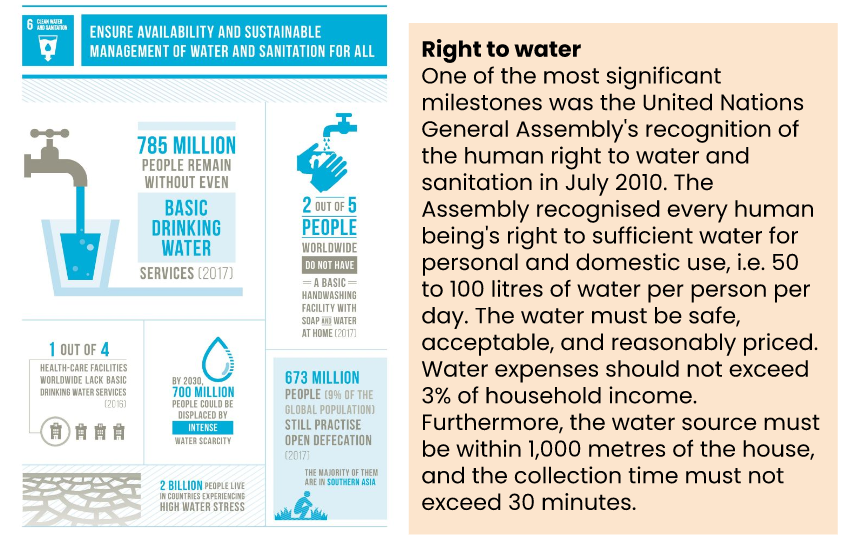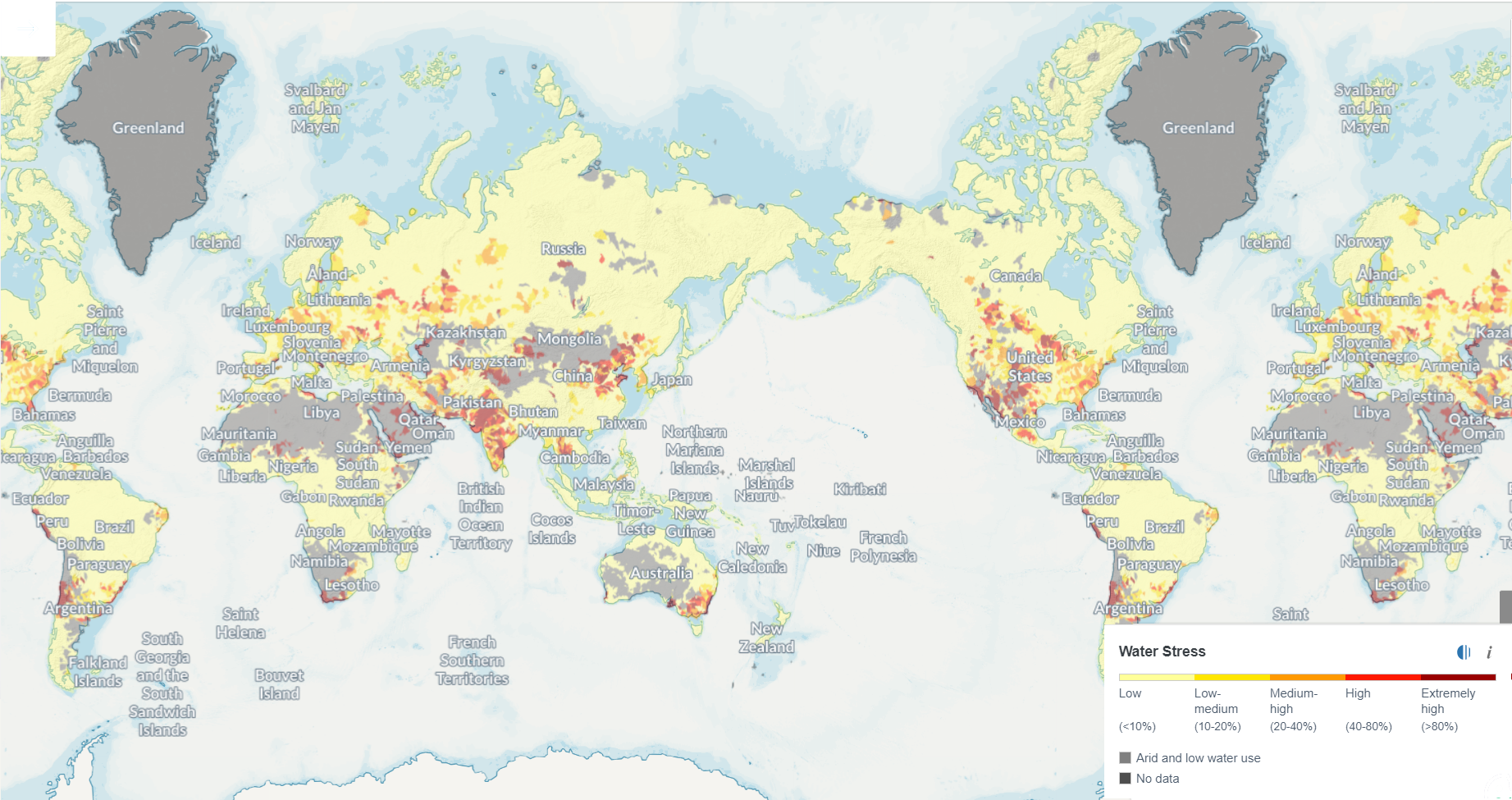2. Water Stress
Water stress is an increasing problem on every continent, with poorer communities most badly affected. To build resilience against climate change and to serve a growing population, an integrated and inclusive approach must be taken to managing this finite resource.
The Indian consumer relies heavily on groundwater sources for usable water. This includes 85% of rural demand, 50% of urban requirements, and more than 60% of our irrigation requirements. In several places, unregulated groundwater extraction has resulted in overuse, causing the groundwater table to plunge and dry springs and aquifers. This creates the situation of water stress in the country.

Water stress can be described as demand- driven scarcity, caused either due to insufficient availability of water or poor quality of the water. The following figure shows the water stress situation across the world:

Indian Scenario of Water Shortage
According to the World bank, India is home to about 18% of the World’s population but has only 4% of its water resources[3]. This makes it one of the most water - stressed countries of the world. This implies that per capita water availability in India is 1,100 m3 annually which is lower than the world threshold for water stress ( 1,700 m3 per capita water availability per year). The per capita water availability threshold set in case of water scarcity[4] is about 1,000 m3. This information indicates that unless India takes action to tackle water availability and its management, it could soon be categorized as one of the nations facing water scarcity.
Problem of Water Shortage
Precipitation is the primary source of fresh water in India. Off the 4,000 billion cubic meters of annual precipitation[5] received, the country only captures 8% of it[6]. However, the average annual precipitation varies from region to region. For example, Mawsynram in Meghalaya receives an average annual rainfall of 11,873 mm. Whereas, Jaisalmer in Rajasthan records an average rainfall of 83mm[7]. The annual groundwater draw is 245 billion cubic meters, which accounts for around 62 percent of the net water available[8]. However, the water availability per capita is decreasing year by year. In certain areas, groundwater extraction has surpassed the replenishment, increasing the demand. Also, the contamination of groundwater makes it unfit for human consumption further enhancing the water shortage. The worldwide water scarcity makes it critical to boost water supply in water-scarce regions. The various causes of water shortage are summarized in Figure below.

Impact of Water Stress
Water shortage is a serious problem, even for geographies with adequate water resources. Water shortage is not only caused by the unavailability of water, but also contamination of the available water resources can lead to water shortage. Individuals are more vulnerable to water scarcity as it hampers the availability of safe water for drinking or basic hygiene in households.
Some of the impacts of water stress include:
- Water shortage can lead to breakdown of sanitation infrastructures and subsequently, related diseases such as cholera might surge and during shortages water becomes expensive.
- Water shortage poses multiple threats to companies such as physical risk to operations, supply chains and the workforce.
- Another risk companies face is due to stricter regulations - for example, higher water prices, stricter emission permits or mandatory water-saving technologies.
- Furthermore, brands face a reputational risk with consumers and media becoming aware of their unsustainable water usage. Many companies have started to monitor their water usage and as more companies realize the threat of growing water scarcity to their business model, the implementation of mitigation strategies will also increase.